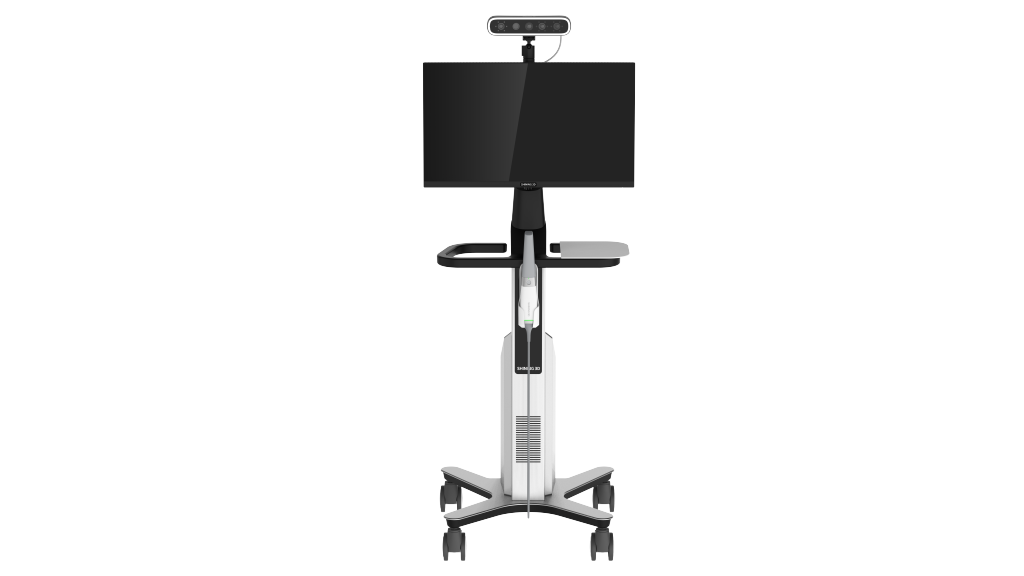Table of Contents
Jaw motion tracking has become an important part of modern dental care. By accurately monitoring mandibular movements, dental professionals gain essential information that supports the design of restorations and other dental appliances. At SHINING 3D DENTAL, we have developed technology that makes jaw motion tracking more accessible and practical for everyday clinical use. Our e-Motion Workstation integrates jaw motion tracking into a complete digital system that helps improve treatment planning and patient outcomes.

How SHINING 3D Simplifies Jaw Motion Tracking
Traditionally, tracking jaw movement was a complex process involving mechanical devices and manual measurements, which could be time-consuming and prone to inaccuracies. The e-Motion Workstation simplifies this task by combining intraoral scanning, face scanning, and mandibular movement tracking into one system. This integration allows clinicians to capture detailed jaw movement data during routine appointments without the need for separate, complicated equipment.
Using the e-Motion Workstation, dental professionals can easily record precise movement trajectories of the mandible, such as chewing cycles, lateral excursions, and protrusive movements. The captured data is then seamlessly integrated into the software, providing a clear and dynamic picture of how the jaw functions in real time. This streamlined process saves time and reduces the likelihood of errors in capturing jaw movements.
Supporting Accurate Design of Occlusal Surfaces
One of the main benefits of accurate jaw motion tracking is its support for designing occlusal surfaces in restorations that fit the patient’s natural function. By understanding how the mandible moves, dental professionals can create restorations that avoid interferences and distribute biting forces more evenly. This leads to better comfort for patients and helps ensure that restorations last longer.
The detailed jaw motion data collected with SHINING 3D DENTAL’s e-Motion Workstation helps in designing prosthetics that adapt to the patient’s unique mandibular movements. This is especially useful in full-mouth reconstructions, implant-supported prostheses, and treatments involving temporomandibular joint considerations. With accurate movement trajectories available, the risk of adjustments after placement is reduced, and patients can enjoy restorations that feel more natural.
Enhancing Treatment Predictability and Patient Experience
Jaw motion tracking also contributes to improving the predictability of dental treatments. With reliable data on mandibular function, clinicians can better anticipate how restorations will perform once in place. This added level of precision helps in planning treatment steps and reduces unexpected complications or adjustments.
Patients benefit from a more efficient and transparent process. The ability to visualize jaw movements and understand the rationale behind treatment decisions increases patient confidence. This helps create a more collaborative relationship between the dental professional and patient, leading to higher satisfaction with the results.
Integrating Jaw Motion Tracking into Clinical Practice
The e-Motion Workstation is designed to fit seamlessly into daily dental practice. Its user-friendly interface and simplified workflow mean clinicians can adopt jaw motion tracking without needing extensive additional training or equipment. Whether the focus is on prosthetic design, splint creation, or orthodontic treatment, the system provides detailed mandibular data that enhances clinical outcomes.
Conclusion
At SHINING 3D DENTAL, we aim to provide digital dental solutions that simplify complex procedures and improve treatment accuracy. Our e-Motion Workstation makes jaw motion tracking an easy and reliable part of dental care. By capturing precise mandibular movements and integrating them into the treatment workflow, dental professionals can create restorations that align with patients’ natural function. This approach supports long-term prosthetic stability, increases patient comfort, and enhances the predictability of treatment outcomes.
 ENG
ENG








